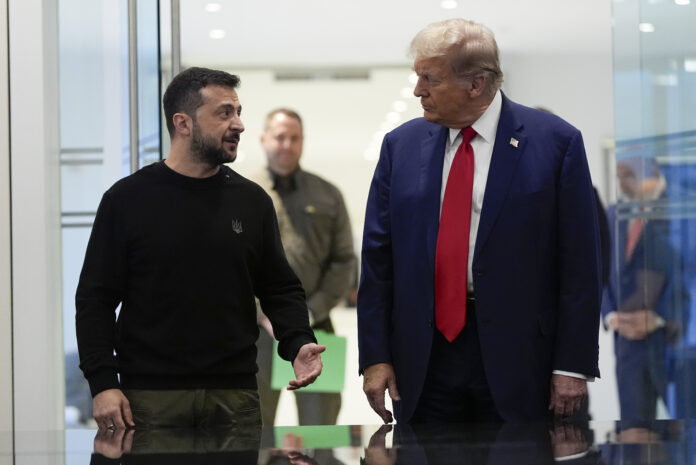Donald Trump is pushing for peace—but at what cost? The U.S. president is aggressively driving negotiations to end the war in Ukraine, vowing to stop the “senseless killing.”
While his rhetoric suggests noble intentions, his approach has sent shockwaves through European allies and sparked panic in Ukraine, which has been devastated by three years of brutal conflict.
Trump’s Solo Talks With Putin Raise Alarms
Trump initially engaged directly with Russian President Vladimir Putin, first by phone and then through diplomatic delegations. Ukraine and European leaders were left scrambling to reinsert themselves into the conversation. French President Emmanuel Macron attempted to woo Trump with a “Dear Donald” charm offensive at the White House, while Ukrainian President Volodymyr Zelensky fought to secure a resource deal with the U.S.
Trump’s negotiators originally demanded Ukraine hand over $500 billion worth of natural resources in exchange for American support. When Zelensky resisted, Trump lashed out, branding him a “dictator” responsible for the war. Under intense pressure, Zelensky managed to negotiate a lower price tag, with the signing ceremony set to take place at the White House on Friday—a crucial opportunity for Kyiv to assert its position.
No U.S. Security Guarantees for Ukraine
In a shocking move, Trump declared that the U.S. would offer “no security guarantees” to Ukraine in any peace deal, insisting that responsibility for peacekeeping should fall on Europe. While he promised to negotiate the return of as much occupied land as possible, many expect the war to be frozen along the current front lines—leaving Ukraine to lose 27% of its territory, including Crimea, annexed by Russia in 2014. To make matters worse, Trump bluntly told Kyiv that NATO membership was “off the table.”
A Deal That Benefits Russia?
Trump’s stance stands in stark contrast to Europe’s position. His approach appears to accept that Russia, despite heavy losses, will emerge from the war with territorial gains—potentially emboldening Putin for future aggression. European leaders fear the move could set a dangerous precedent, further destabilizing the region.
Trump also seeks to offset military aid given to Ukraine under Joe Biden, inflating the figure to $350 billion when the true amount, according to the Kiel Institute, is closer to $151 billion. His motives seem clear—fulfilling a key campaign promise while disregarding the concerns of U.S. allies.
Chilling Relationship With Putin
Trump’s personal disdain for Zelensky is another factor, with the former president viewing the Ukrainian leader as disloyal. His MAGA movement has also accused Zelensky of corruption and religious suppression. Yet, when it comes to Putin, Trump has remained eerily silent, avoiding any criticism of the Russian leader. His long-standing affinity for the Kremlin strongman has baffled observers for over a decade.
A Strategic Play or Dangerous Gamble?
Trump’s inner circle insists that his approach is simply a negotiation tactic, aimed at securing a swift end to the war. His ultimate goal, according to insiders, is to stabilize energy prices and refocus U.S. efforts on what he sees as the greater geopolitical battle: America’s power struggle with China.




